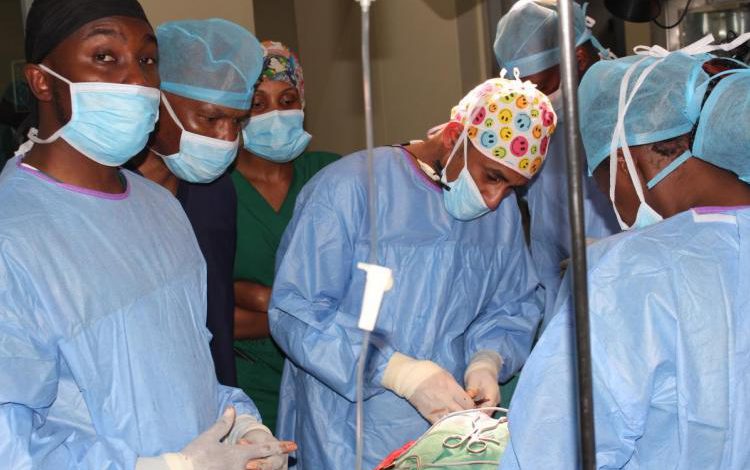Why KNH doctors have had only 5 successful reattachment surgeries since 2018

Following the news that KNH surgeons just recently conducted, successfully, a 10-hour surgery to re-attach the hand of a seven-year-old boy, one would ask why we have so many people around us who had limbs- or even just a finger- chopped off but they were never re-attached. The comments by KNH doctors about the success of this particular surgery gives Kenyans a clue as to why there haven’t been many such successful operations.
Storage of the chopped off limb
Dr Wabwire, the lead surgeon in the operation that saw young Benevolence’s hand re-attached, said that a severed limb should be stored in a plastic bag or any plastic container at temperatures of 0-8 degrees after the accident to avoid contamination. Most people are ignorant of this fact, and will usually carry the part in open air or wrap it in cloth. The presence of bacteria on and consequently in the severed parts increases the chances of dead cells, or infection after surgery.
Time
The doctors also said that most of the cases referred to KNH do not make it in time for a successful surgery. Most of these cases come from as far as the Coast and Western regions. In Doctor Wabwire’s words, “Our greatest challenge has been that the person must arrive as soon as possible so that we are able to re-establish the blood connection in the amputated part.” Also worth noting is that even if the cut body part is stored properly, cells naturally start to die just because they are not naturally attached. The more time spent before surgery, the higher the chances of having too few cells alive for reattach. 10-12 hours is the maximum time within which a surgery for replant should be conducted after the accident.
Personnel (doctors)
Although the successful surgery of the young boy was an indication that we have highly qualified doctors in Kenya, it is unfortunate that we do not have enough of these doctors all over the country. If there were enough of them to be distributed in several hospitals across the country, some of those cases that arrive at KNH too late could be saved. Dr. Wabwire said that there are plans to ensure that the University of Nairobi trains enough medics who can attend to such cases in the Coastal and Western regions.
Distance and poor infrastructure
Dr Wabwire said that there were plans to ensure the availability of ambulances to airlift patients within the shortest time possible. This is because the cases that fail to arrive in good time, mostly do so because of the distance they have to cover to get to KNH. The state of our roads in Kenya do not make that situation any better.
Read a digital copy of Parents here.




